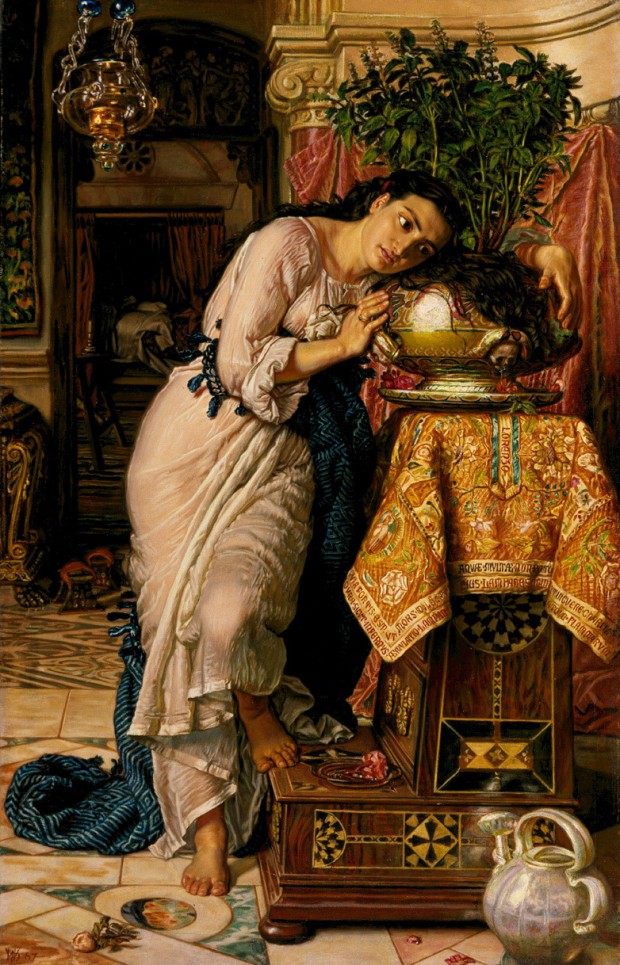
The painting that got the Delaware Art Museum into so much trouble: William Holman Hunt’s “Isabella and the Pot of Basil” (1868).
Here’s how to make the American Alliance of Museums angry: Sell artwork from your museum to cover your debts. After William Holman Hunt’s “Isabella and the Pot of Basil” sold for $4.25 million at Christie’s in London, the AAM publicly revoked the museum’s membership and advised all other AAM members against working with them, including refusing to loan artworks or collaborate on exhibitions. In other words, they’ve been blacklisted.
A 2003 facilities expansion left the museum with $19.8 million in debt. At the end of March, board members from the Delaware Art Museum unanimously voted to auction off four works from its collection, hoping to garner $30 million in total to pay off the museum’s debt and increase their endowment. In a press release regarding the board’s vote, Museum CEO Mike Miller claimed that there were no other options for the museum to stay afloat: “After detailed analysis…the Trustees had two agonizing choices in front of them—to either sell works of art, or to close our doors.” Surely, a dire situation.
And so, on Tuesday we saw the first of the Delaware Art Museum’s proposed works go on the auction block; that very same day the AAM’s accreditation commission met to vote on removing the museum’s accreditation. They did so unanimously, stating that the Delaware Art Museum was in “direct violation of museum standards and ethics” as they should only sell off works in the collection for “purposes of acquisitions” or “direct care of collections.” (This is why, for example, the Akron Art Museum was totally okay by AAM standards for auctioning off a Cindy Sherman at Christie’s in 2012; the funds went towards their acquisition budget.)
Yes, the Delaware Art Museum broke AAM rules, there’s no denying that. But there’s something truly awful about the AAM decision: it fails to address why the Delaware Art Museum got into this situation in the first place. Too many museums feel the need to spend millions on architectural additions, rather than on programs, collections, or salaries.
Where was the AAM in 2003 when the Delaware Art Museum first broke ground on that expansion? Who was around to tell them maybe a new gallery wasn’t such a great idea? Expansion is the root of this problem which ends up landing museums in debt over shiny, glass-filled galleries. Let’s focus on that.


Comments on this entry are closed.